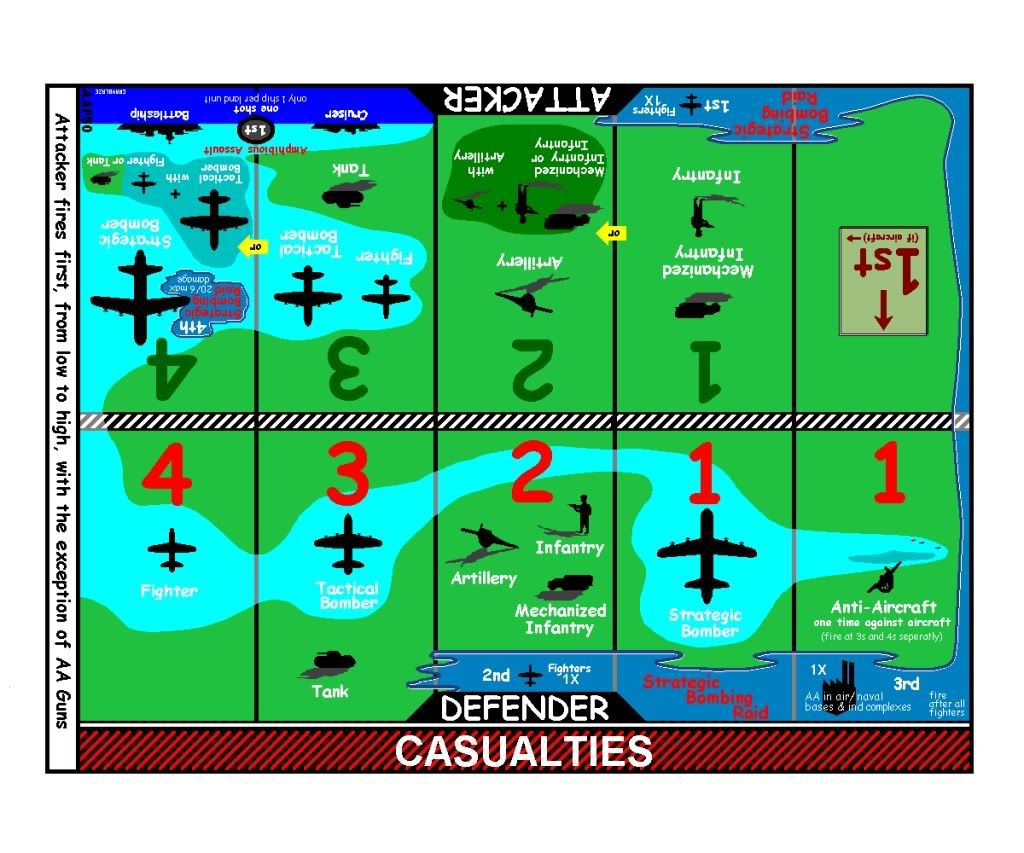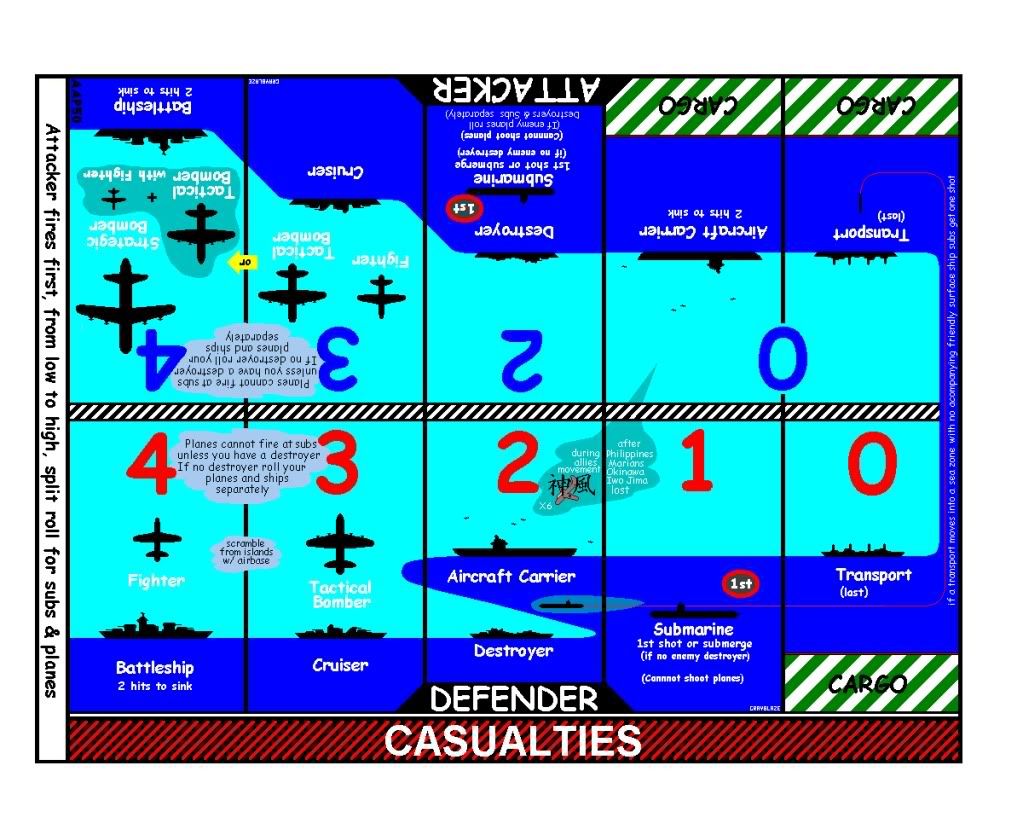Sometimes it can get a little confusing in island sea zones which units are in the sea zone and which are on the island. The statement is intended to make sure the attacker indicates which air units are which, since they can in many cases get to either space.
Sea Battle because of scrambling
-
Probably this was clarified before, but I didn’t find it yet in the forum:
Situation: Japanese amphibious assault on the Philippines, US Navy left last turn, only one fighter and two infantry are still there.
If this fighter scrambles, there is a sea battle. But because of the scrambling rules, the attacker doesn’t know in his combat move phase.
a) When is the attacker to decide where to put his planes? (Page 13 Rulebook: “If an amphibious assault involves a sea combat, any air units participating in the assault must move to either the sea zone or the land territory.”) By the time he plans his combat move there is no present unit for a sea battle and thus a combat move for planes to the sea area is impossible…
b) Page 17 Rulebook: “If sea combat occurs, all attacking and defending sea and air units present must participate in the battle.”
Page 18 Rulebook: “The attacking player must declare which air units are involved in each part of the attack and can’t change their assignments later.” - I assume that “all attacking air units” do not contain those picked for land battle, is this right?Thanks for any help :-)
-
Welcome to the forum, wicked_caitiff!
From the rulebook:
@rulebook:
Scramble
Scrambling is a special movement that the defender can make at the end of this phase [i.e the attacker’s combat move phase]. It must be done after all of the attacker’s combat movements have been completed and all attacks have been declared. The attacker may not change any combat movements or attacks after the defender has scrambled.So the attacker decides where to put his planes in his combat move phase. He hast to consider, that the defender may possibly scramble. The attacker may place his planes in the seazone where a potential scramble could occur. This is explicitly stated in the rules, too:
@rulebool:… Moving transports and their cargo into a sea zone from which you plan to make an amphibious assault counts as a combat move,
even if there are no defending surface warships there and there is no potential for air units to be scrambled (see “Scramble”, page
15). This is also true of any units that will support the assault. Further, if enemy air units could potentially be scrambled to defend
the sea zone, additional units may be moved into the sea zone to combat them in case they are indeed scrambled.Your planes would be the “additional units” then, that in this case may be moved into that SZ in the combat move phase, because of the potential scramble, although the SZ is not hostile at this moment.
So it is correct to differ between ait units that are moved into the SZ to meet a potential scramble and air units that move into the land territory in order to conduct combat there (so your assumption stated in b) is correct).
HTH :-)
-
Yes, welcome, indeed.
Panther beat me to it, but I will post anyway. With any luck, you will have things clarified.a. In the Combat Move phase. When he has done all his Moves, the defender decides whether to scramble or not. If the defender elects not to scramble, the attacker has won the Naval battle, without rolling. You move on to the second step: the amphibious assault.
Scrambling helps the defender, as the attacker has to assume there could be a naval battle and have units protect his amphibiously landing units, just in case.
b. That is right: a unit can only be in one battle. The choice is made, before any rolls.
-
@wittmann:
b. That is right: a unit can only be in one battle. The choice is made, before any rolls.
Not wanting to be nitpicking, but precisely the choice is made in the attacker’s combat move phase, even before the defender’s decision to scramble.
-
Thanks for the hint, thats what I searched for.
It’s OK, scrambling depends on what the attacker has chosen beforehand.Side effect: Do these Planes left on sea for counterscrambling have two more movement points in the non combat movement phase than those attacking the land forces (e.g. they have to enter and to leave the island which costs 2 movement points)?
-
… e.g. they have to enter and to leave the island which costs 2 movement points?
Correct.
-
Another plane question:
Are planes allowed to attack alone and independently, e.g. a bunch of ftrs may attack some strat bombers behind the lines in an area not bordering to a hostile area, and sea battles without friendly ships (i.e. only attacking with planes, like the Pearl Harbour attack) are normal?
It’s clear they can’t capture areas this way, SSs can only be attacked with supporting DDs and losses are kinda expensive, but you have to be even more careful where to put your strat Bombers and weakly guarded transports. -
…
Are planes allowed to attack alone and independently, …Yes, as long as every plane has a valid landing spot.








